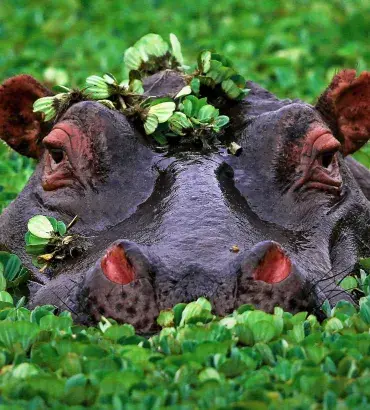Tanzania
A third of Tanzania is protected.
From its stunning Indian Ocean beaches to the shores of Lake Victoria, from the arable plains of its central plateau to the heights of Mt. Kilimanjaro, Tanzania is a jewel of East Africa. It is the largest country in the region, formed in 1964 by the union of Tanganyika and Zanzibar. Among Tanzania’s neighbors are Kenya to the north and Mozambique to the south, with multiple landlocked nations to its west relying on it for access to the coast.
Kenya
In Kenya, conservation is a cornerstone of the economy.
Kenya is a country of diverse, rich habitat. The humid broadleaf forests along the coast of the Indian Ocean give way to lush grasslands and savannas. The Kenya Lake System of the geologically dramatic Great Rift Valley is a UNESCO World Heritage Site. And, Mount Kenya — the nation’s namesake — is the second-tallest mountain on the continent.
Uganda
Uganda has an extraordinary natural beauty and significant untapped tourism potential.
From the highest mountain range in Africa — the Mountains of the Moon — to the mighty Nile, Uganda is filled with natural beauty.
So, it’s only natural that there is a variety of wildlife and flora found within the country’s boundaries. More than half of the world’s endangered mountain gorillas, over 1,000 bird species, along with seven out of the 18 plant kingdoms, and more than 340 mammal species find sanctuary in Uganda.
